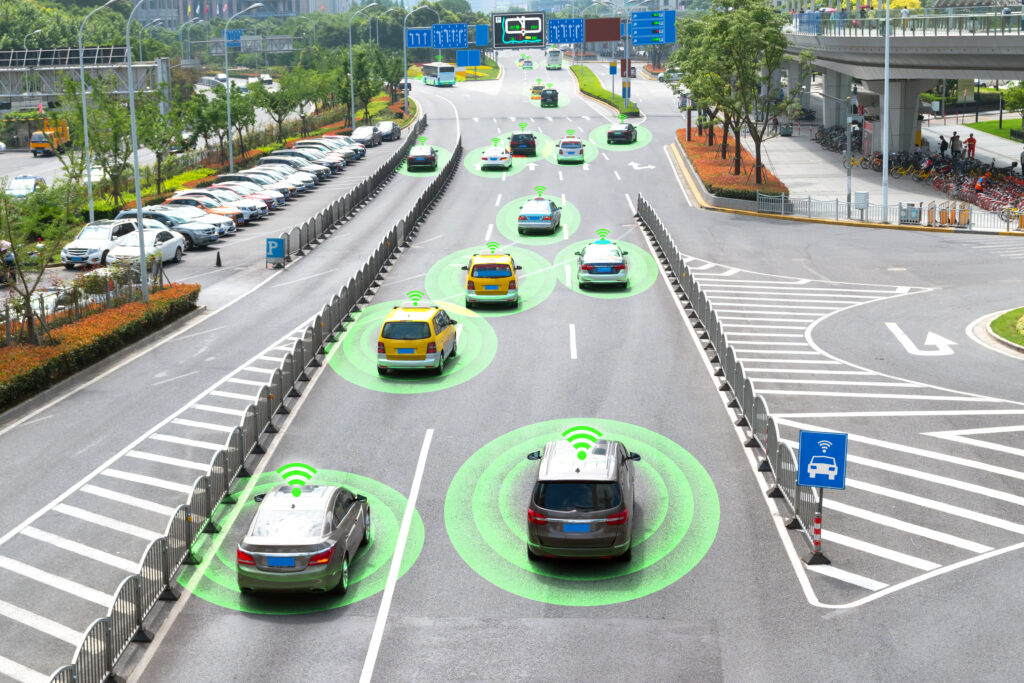There has been plenty of evidence over the last few years to show how seriously consumers take safety features when buying a car: 64% of respondents in the 2020 Statista Global Consumer survey said it was their number one requirement.
While electronic stability control, brake assist systems, intelligent anti-skid and blind spot information systems have all been part of a steady evolution of e-systems over the years, connected car services have brought a new angle to what constitutes car safety features. Using a combination of external and internal sensors, a new generation of connected car technologies can detect everything from hazards on the road to drowsy drivers at the wheel.
Growing evidence that these features can reduce accidents and fatalities has sparked collaboration between automakers and governments, driving a new approach to road safety and transport management. The eCall service, mandated in all European vehicles built after 2018, gave an early indication of the possibilities, triggering emergency calls automatically via vehicle sensors or manually by the vehicle occupants following a serious accident.
What’s happening inside the car, however, is just one aspect of road safety.
Urban Data Platforms
Outside the vehicle, emerging technologies are starting to be used to collect, collate, and analyse data in smart cities. The evolution of IoT sensors and low-latency networks like 5G will play a big part in improving road safety, especially when they are integrated with Urban Data Platforms (UDPs).
The European Innovation Partnership on Smart Cities and Communities (EIP-SCC) is pushing for the adoption of UDPs to serve the needs of 300 million European citizens by 2025. It wants cities to be able to collect, aggregate, and analyse data for a wide range of use cases, spanning multiples modes of transport and infrastructure.
Real-time integration with road vehicles will help optimise traffic flow and improve road safety; historical data could be used by traffic control centres for programming traffic signals, or for planning roadworks and diversions that minimise congestion.
Hamburg is further along this journey than most European cities with a UDP that connects to street sensors for analysing vehicle movement and behaviour. Operated by the Hamburg State Office for Geoinformation and Surveying, it has done a lot of groundwork around the challenge of data protection, ensuring smart city data is collected and used in a way that is compliant with GDPR in Europe. The city is working on a research project with Volkswagen Group Innovation, looking into how to use anonymised sensor data around road conditions to improve road safety. In the future, the data may be used to identify high-risk roads in winter, for example, and ensure they are gritted first.

Anonymous and open
Using IoT data for transport infrastructure management services will not just optimise journey times and safety, it could result in significant savings, for example: giving insights into how much grit is likely to be needed and where. There are plans to expand the Hamburg project and share data with other German and European cities, adding even more value because the bigger the data pool the more useful the insights.
Crucial to the success of every smart city project is ensuring that data is not just anonymised, but that it’s available on open standards architecture and easy to share. This paves the way for combining rich data sources and unlocking more use cases. Crowdsourced data, for example, could highlight real-time events that public and private transport users can tap into and use to ensure shorter, safer journeys.
Data-driven road safety
The smart city proposition of safe and more sustainable travel is starting to be realised, and so compelling that every automotive manufacturer should consider how their technologies can make an impact. As the projects above show, data is the foundation on which all of this will be built, and connected vehicles will sit at the heart of providing it. From real-time traffic and hazard information to predictive maintenance, diagnostics, and over-the-air updates ensuring that vehicles are always at their best and capable of adapting to changing conditions.
In addition to providing the real-time and historical data traffic management authorities and smart-city builders will need, data-driven carmakers will be uniquely placed to create safer, more sustainable driving experiences in the future. Cubic Telecom’s technologies are transforming the way some of the world’s leading automotive makers unlock the value of their connected vehicles, delivering the advanced analytics and insights that will power the next generation of software-defined vehicles.
Learn more about how carmakers can transform into data-driven businesses, download our Transforming Carmakers into Powerful Data-Driven Businesses eBook today.

